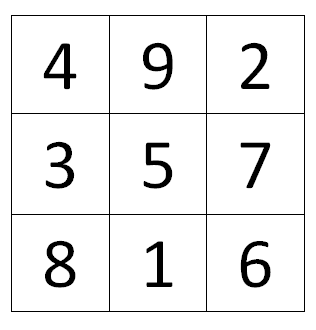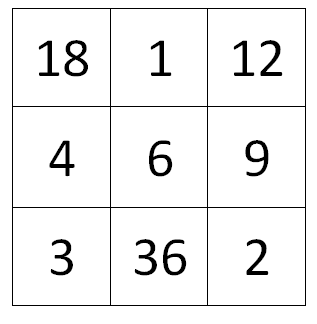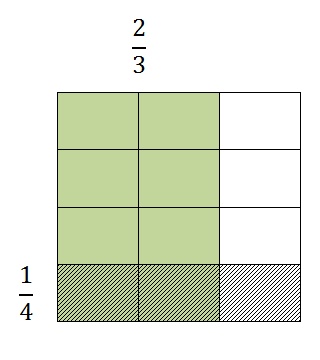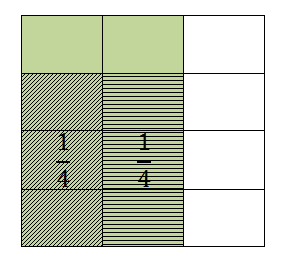It began almost accidentally. After fooling around with some interesting magic squares recently I decided to put a couple in front of my students. I wanted to step away from our work with division of fractions momentarily and ignite their curiosities. Below is the fist magic square I showed them.
 I won’t bore you by telling you about all of the amazing patterns inside this square – they are yours to discover. In class we shared things we noticed. One of my students noted something like “It goes 8 – 5 – 2 diagonally: each number three less than the one before?” (Notice the question mark?) I said “Are you asking me? You’ve got to make a statement! You’ve made a discovery! You’ve got to stand up and shout EUREKA! So from here on out the class made really exciting discoveries punctuated by shouts of “Eureka!”
I won’t bore you by telling you about all of the amazing patterns inside this square – they are yours to discover. In class we shared things we noticed. One of my students noted something like “It goes 8 – 5 – 2 diagonally: each number three less than the one before?” (Notice the question mark?) I said “Are you asking me? You’ve got to make a statement! You’ve made a discovery! You’ve got to stand up and shout EUREKA! So from here on out the class made really exciting discoveries punctuated by shouts of “Eureka!”
Then we looked at the following magic square.
 What do you notice? We made one discovery after another – the class was reaching a fevered pitch: math was rocking the house, and the students’ excitement and engagement was running into the red. Time to change gears and use some of this fuel on division of fractions.
What do you notice? We made one discovery after another – the class was reaching a fevered pitch: math was rocking the house, and the students’ excitement and engagement was running into the red. Time to change gears and use some of this fuel on division of fractions.
Division of fractions – something like 2/3 ÷ 1/4 – is an odd thing to get your head around. We’ve been working with visual models for a little while but it still takes some mental work to see this stuff. In the old days there used to be this saying in elementary math about dividing fractions: “Ours is not to wonder why, just invert and multiply.” Catchy, but this takes all of the understanding right out of the equation (math joke!). Maybe the problem looks like this:
 Here we see a rectangle that is cut into thirds vertically and fourths horizontally. Each column represents one-third and each row is one-fourth. So the question is: How many of the shaded areas will fit into the green area? If we rotate the one-fourth, we can fit two full fourths into the green area (below). In the remaining green area we can only fit 2/3 of a quarter strip.
Here we see a rectangle that is cut into thirds vertically and fourths horizontally. Each column represents one-third and each row is one-fourth. So the question is: How many of the shaded areas will fit into the green area? If we rotate the one-fourth, we can fit two full fourths into the green area (below). In the remaining green area we can only fit 2/3 of a quarter strip.
 So the number of fourths that can fit is 2 and 2/3. You can think about it this way: How many groups of 1/4 can I make with 2/3 of a whole? Scoop, scoop, little scoop.
So the number of fourths that can fit is 2 and 2/3. You can think about it this way: How many groups of 1/4 can I make with 2/3 of a whole? Scoop, scoop, little scoop.
If we look at the equations we can make some sense of these as well. Notice that in the equation below, we just combine the fractions into one fraction and the result is another way of looking at the picture above! How many 3/4 can fit into 2 wholes? – except this time the whole is actually just one-quarter! Do you see it?
 Maybe you don’t like that one… OK, I can live with that. But what if we did something interesting like found a common denominator for the fractions. 2/3 = 8/12 and 1/4 = 3/12.
Maybe you don’t like that one… OK, I can live with that. But what if we did something interesting like found a common denominator for the fractions. 2/3 = 8/12 and 1/4 = 3/12.
 In this equation, the quotient of the first expression gives us 1 in the denominator! So it effectively becomes 8 ÷ 3 or 8/3, which is 2 and 2/3. This technique just melts the fraction division away.
In this equation, the quotient of the first expression gives us 1 in the denominator! So it effectively becomes 8 ÷ 3 or 8/3, which is 2 and 2/3. This technique just melts the fraction division away.
All of this happened in one class. And there were more problems than just this one and more voices than just mine. Students were explaining what they saw and why it made sense, and they were shouting “Eureka!” every time they understood something new. Many students were standing, and hands were waving all around the room. I can tell you that at times it got a little crazy. But this is how, at 12:20pm, after a long morning of classes culminating in a math lesson on the division of fractions, a group of 25 fifth-graders spontaneously erupted into applause. It certainly doesn’t happen every day.
Ours is definitely to wonder why.
